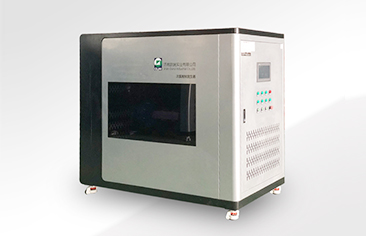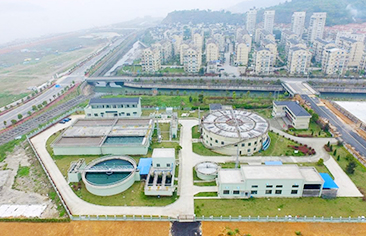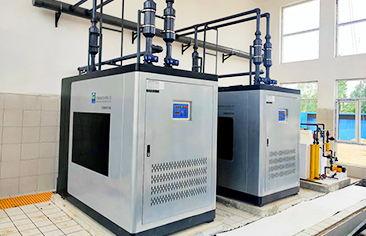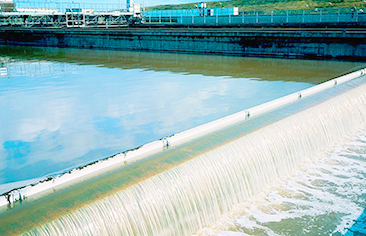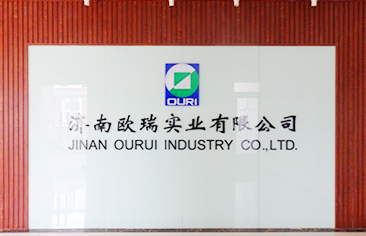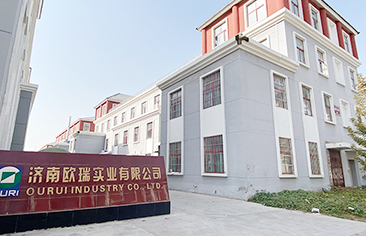1. Stability: Chlorine dioxide exists in the water as a molecular state, does not hydrolyze, and does not generate chloramine with ammonia. It has a strong bactericidal effect in a wide range of pH values, and has a killing effect on germs and spores. It is also better than chlorine.
2. Chlorine dioxide generator control of trihalomethane (THMS): Trihalomethane (THMS) refers to chloroform and other chlorinated and brominated organic derivatives produced in water after chlorine disinfection, which has carcinogenic effects on animals. The United States Environmental Protection Agency (USAPA) stipulates that the total amount of trihalomethane in diversion water should be less than 0.1mg/L. my country's drinking water sanitation standard (GB5749-85) stipulates that the content of chloroform in drinking water shall not exceed 60ug/L. Chlorine dioxide used for drinking water disinfection can reduce chloroform by 97%, monobromodichloromethane can reduce by 95%-98%; carbon tetrachloride can reduce by 89%.
3. Control of odor and bromine: Surface water often contains phenols. When treated with chlorine gas, chlorophenols will be produced, causing the water to contain odor and bromine. The product of chlorine dioxide and phenol is benzoquinone, no chlorophenol is produced. Under alkaline conditions, chlorine dioxide can rapidly oxidize metallic iron and manganese ions to form insoluble compounds and precipitate.
4. Control of algae: Chlorine dioxide has a certain affinity for the pyrrole ring of chlorophyll, and reacts with it to produce an odorless and tasteless product. After the oxidation of chlorophyll, the metabolism of the plant is terminated and the synthesis of new proteins is interrupted. In addition, the odor-producing substances from algae can also be odorless and tasteless after being oxidized with chlorine dioxide. In view of the many advantages of chlorine dioxide in water treatment, the Ministry of Construction recommended the use of chlorine dioxide as the preferred disinfectant for drinking water in the "Technical Progress Development Plan for Urban Water Supply Industry in 2000".
5. Physical properties: The molecular formula of chlorine dioxide is CLO2, a gas whose color changes from yellow-green to orange with increasing temperature, and has a pungent odor similar to chlorine. The boiling point is 11°C, the freezing point is -59°C, and the critical point is 153°C. The liquid and gas properties of pure chlorine dioxide are extremely unstable. When the concentration of chlorine dioxide in the air exceeds 10%, it is highly explosive. It is easily soluble in water, and its solubility is 8 g/L under normal temperature (25°C) and 1.1×104pa partial pressure.
6. Chemical properties: The chemical properties of chlorine dioxide are very active, and generally have strong oxidizing properties under acidic conditions, second only to ozone.
7. Photolysis reaction: Chlorine dioxide is more sensitive to light, and it is easy to decompose when exposed to light. Even in dark conditions, there is still a 2-10% dissociation rate per day. And during daily storage, it should be kept away from light, and taken on-site (activated) and used on-site.
8. Disinfection performance of chlorine dioxide generator:
Compared with other commonly used disinfectants, its bactericidal effect is: ozone > chlorine dioxide > chlorine > chloramine; its stability is: chloramine > chlorine dioxide > chlorine > ozone. In general, chlorine dioxide has the best performance.
Control of trihalomethane (THMS): Trihalomethane (THMS) refers to chloroform and other chlorinated and brominated organic derivatives produced in the water after chlorine disinfection, which is carcinogenic to animals. The United States Environmental Protection Agency (USAPA) stipulates that the total amount of trihalomethane in diversion water should be less than 0.1mg/L. my country's drinking water sanitation standard (GB5749-85) stipulates that the content of chloroform in drinking water shall not exceed 60ug/L. Chlorine dioxide used for drinking water disinfection can reduce chloroform by 97%, monobromodichloromethane can reduce by 95%-98%; carbon tetrachloride can reduce by 89%.
3. Control of odor and bromine: Surface water often contains phenols. When treated with chlorine gas, chlorophenols will be produced, causing the water to contain odor and bromine. The product of chlorine dioxide and phenol is benzoquinone, no chlorophenol is produced. Under alkaline conditions, chlorine dioxide can rapidly oxidize metallic iron and manganese ions to form insoluble compounds and precipitate.
4. Control of algae: The chlorine dioxide generator has a certain affinity for the pyrrole ring of chlorophyll, and reacts with it to produce an odorless and tasteless product. After the oxidation of chlorophyll, the metabolism of the plant is terminated and the synthesis of new proteins is interrupted. In addition, the odor-producing substances from algae can also be odorless and tasteless after being oxidized with chlorine dioxide. In view of the many advantages of chlorine dioxide in water treatment, the Ministry of Construction recommended the use of chlorine dioxide as the preferred disinfectant for drinking water in the "Technical Progress Development Plan for Urban Water Supply Industry in 2000".
5. Physical properties: The molecular formula of chlorine dioxide is CLO2, a gas whose color changes from yellow-green to orange with increasing temperature, and has a pungent odor similar to chlorine. The boiling point is 11°C, the freezing point is -59°C, and the critical point is 153°C. The liquid and gas properties of pure chlorine dioxide are extremely unstable. When the concentration of chlorine dioxide in the air exceeds 10%, it is highly explosive. It is easily soluble in water, and its solubility is 8 g/L under normal temperature (25°C) and 1.1×104pa partial pressure.
6. Chemical properties: The chemical properties of chlorine dioxide are very active, and generally have strong oxidizing properties under acidic conditions, second only to ozone.
7. Photolysis reaction: The chlorine dioxide generator is more sensitive to light, and it is easy to decompose when exposed to light. Even in dark conditions, there is a 2-10% dissociation rate per day. And it should be kept away from light during daily storage, and taken on-site (activated) and used on-site.
8. The disinfection performance of chlorine dioxide:
Compared with other commonly used disinfectants, its bactericidal effect is: ozone > chlorine dioxide > chlorine > chloramine; its stability is: chloramine > chlorine dioxide > chlorine > ozone. In general, chlorine dioxide has the best performance.
